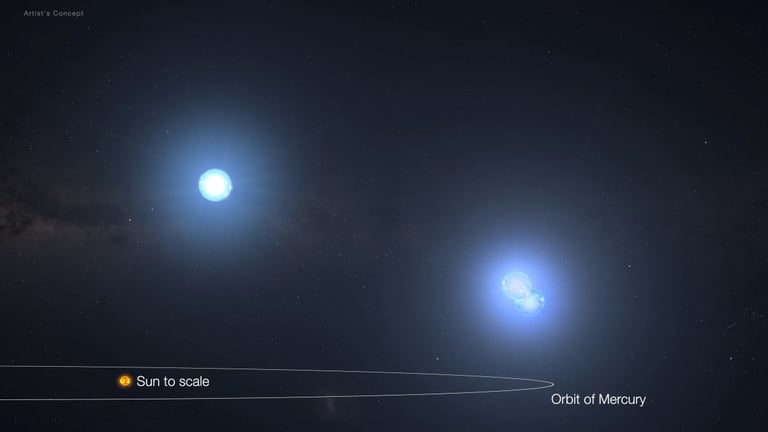AI Detects Record-Breaking Triple Star System, TIC 290061484, with TESS Data
October 3, 2024
The orbits of the three stars are so compact that they fit within the orbit of Mercury around the Sun, yet their proximity does not destabilize their orbits.
Despite the stability of the stars' orbits, the formation process of this system likely precluded the development of close planetary systems around them.
Launched in April 2018, TESS played a crucial role in detecting light variations from this star system, which consists of two twin stars orbiting each other every 1.8 days and a third star orbiting them every 24.5 days.
This configuration sets a new record for the shortest outer orbital period in a three-star system, surpassing the previous record of 33.03 days established in 1956.
In approximately 20 to 40 million years, the inner stars are expected to merge, potentially resulting in a supernova explosion that would obliterate the system.
The compact, edge-on configuration of TIC 290061484 allows for precise measurements of the stars' orbits, masses, sizes, and temperatures, as highlighted by NASA research scientist Veselin Kostov.
The identification of this stellar trio was made possible through machine learning techniques that analyzed TESS data to detect flickers of starlight indicative of eclipses.
Looking ahead, the upcoming Nancy Grace Roman Space Telescope is expected to enhance the search for even tighter triple star systems and potentially uncover new categories of star systems.
The excitement surrounding TIC 290061484 suggests that more complex multi-star systems may exist in the galaxy, as noted by co-author Saul Rappaport.
Astronomers have made a groundbreaking discovery of a unique triple star system named TIC 290061484, utilizing artificial intelligence and data from NASA's Transiting Exoplanet Survey Satellite (TESS).
Citizen scientists, including I.A. Terentev and H.M. Schwengeler, collaborated with professional astronomers, contributing to the study's findings by analyzing images from TESS.
The discovery was published on October 2, 2024, in The Astrophysical Journal by a team led by NASA scientist Veselin Kostov.
Summary based on 6 sources
Get a daily email with more Science stories
Sources

NASA • Oct 2, 2024
NASA’s TESS Spots Record-Breaking Stellar Triplets - NASA
CNET • Oct 3, 2024
NASA Teams Up With AI to Spot a Record-Breaking Stellar Trio
Gizmodo • Oct 3, 2024
Three-Star System Shatters Astronomy Record
Phys.org • Oct 2, 2024
New triple star system sets shortest orbital period record